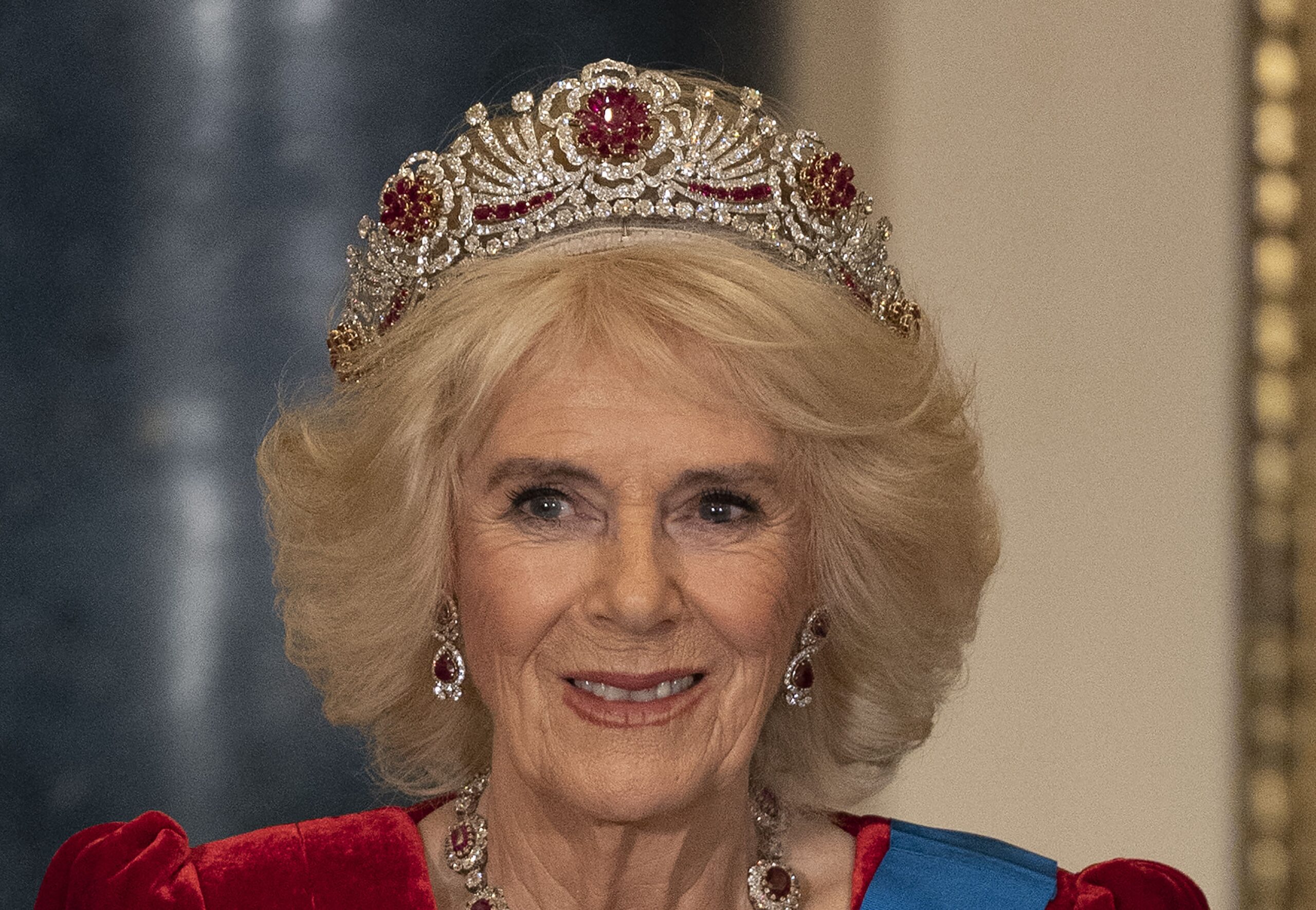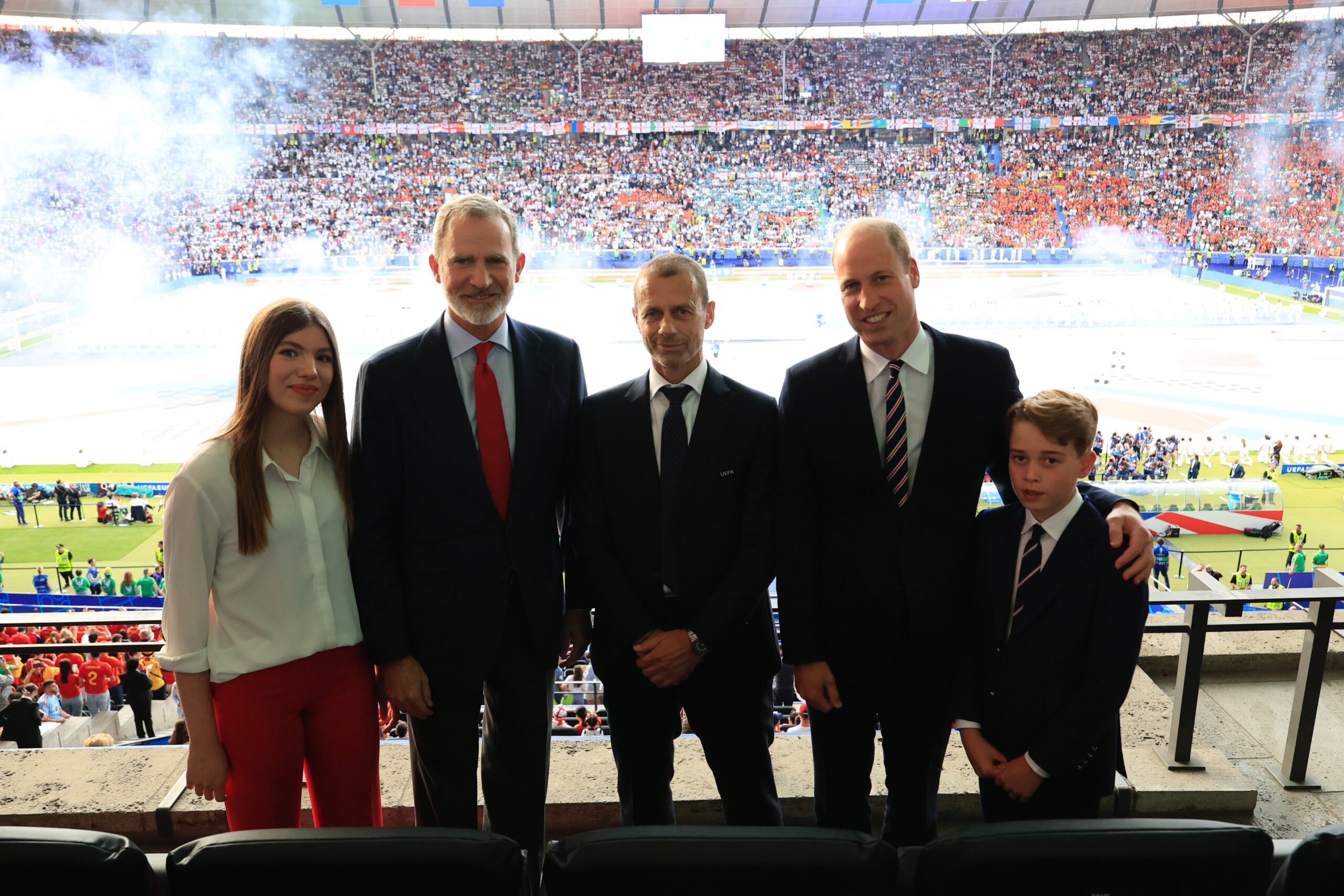This week saw the release of declassified documents from 10 Downing Street, some of which dealt with the death and funeral of Diana, Princess of Wales, in 1997.
Amongst the items revealed to the public are the diplomatic cables from Sir Michael Jay, who was the British Ambassador to France at the time, and also the first British person to be told about Diana’s death.
Embed from Getty Images
Sir Michael Jay, centre, in 2004
The ambassador wrote: “The French authorities alerted this embassy at about 01.30 local time on 31 August to the car accident involving Diana Princess of Wales, and Mr al-Fayed. My wife and I went immediately to the Pitié-Salpêtrière Hospital, and remained there through the night. The French interior minister, Jean-Pierre Chevenement, visibly moved, was already at the hospital…”
The trio stayed at the hospital until the French interior minister ‘around 4am, took my wife and me aside, and told us the Princess of Wales was dead. He was visibly moved’.
After being notified of the passing of the mother of the future British King, the ambassador and his staff began to call Downing Street and the British Foreign Office, as well as royal residences, to convey the sad news to them.
It was then decided by Mr Jay and Mr Chevenement that the hospital authorities would announce the death to the press, after which they would then make a statement.
Before anything was announced however, the duo spoke with Mohammad al-Fayed, who had traveled via helicopter to the hospital. About this, the ambassador said: “At about 5.30am, as we were walking across the hospital grounds to the lecture room that had been converted into a temporary press centre, Mohammed al-Fayed, who had flown by helicopter from his home in southern England, was driven into the grounds. Chevenement and I confirmed his son and the Princess of Wales were dead, and tried to comfort him.”

The Princess of Wales and her two sons, William and Harry, ride in a horse-drawn sleigh as they leave their hotel in Lech, Austria in 1994.
Following the official announcement of the death of the Princess, Mr Chevenement told the ambassador that the French Prime Minster Lionel Jospin was on his way from La Rochelle on the west coast to pay his last respects to the Princess, and that he would also like to do so.
In his dispatch, the ambassador said that: “I explained that paying last respects was not a strong British or Anglican tradition. But I thought it right that Chevenement, who wanted to pay his respects to the Princess, and who has shown exceptional compassion and sensitivity, as well as efficiency, throughout the night, should be allowed to do so. My wife and I were with him”.
Others arrived at the hospital to pay their respects that morning, including Bernadette Chirac, the President’s wife, and Bernard Kouchner, the former health minister and a friend of Diana through his work with the medical charity, Médecins Sans Frontières.
The Prince of Wales, along with Diana’s older sisters, Lady Sarah and Lady Jane, arrived at the hospital around 5pm on 1st September, and were taken to view Diana’s remains alongside President Jacques Chirac. They would leave for England an hour and a half later with the Royal Standard draped coffin of Diana, Princess of Wales, on an RAF plane.
Notably, in his dispatches, Mr Jay constantly praised the French authorities for their efficiency and their compassion in carrying out an investigation and making arrangements for the return of the body to Britain.
Also released was a declassified memo for Prime Minister Tony Blair, which was prepared by a Downing Street staffer on the morning of the 31st. It states that neither the Ambassador nor any embassy staff were aware that the Princess and Dodi al-Fayed had arrived in Paris. The document also mentioned that the Close Protection Squad of the French police were not aware ‘and have said that they would have made an escort available if that had been requested’.
Other letters to Tony Blair are included in the declassified group, one from Mohammed al-Fayed and another from Earl Spencer. In his letter, al-Fayed says that he ‘shall never be able to reconcile myself to the loss of two people so vibrant, so generous and so irreplaceable’, while Spencer thanked the Prime Minister for his kindness and for appreciating Diana and the positive force she proved to be in the lives of many people.
Diana’s funeral plans
There are also a number of documents on the funeral itself. One such piece is an early draft of the Order of Service, which shows Elton John was originally going to perform ‘Your Song’. That draft of the service was circulated on 2nd September, but the following day, documents show he was to perform ‘Goodbye England’s Rose/Candle in The Wind ‘97’. Why the change? It was all down to the Dean of Westminster, who urged ‘boldness’ in a fax to Lieutenant Colonel Malcolm Ross – then Comptroller of the Lord Chamberlain’s Office – at Buckingham Palace.
But Elton John was not a shoe-in for the performance at the funeral. It was a toss up between a popular established musician who Diana knew, or a teenager (who is not named) from a charity with which the Princess was associated, who was to play an improvised saxophone solo.
A big topic of documents from that week in 1997, and beyond, deal with the issue of litigation. On 3rd September, Sir Michael Jay told Downing Street that the fact that ‘the late Princess’s mother and sisters are now parties to the legal proceedings introduces new sensitivities to the criminal investigation’ as this will ‘increase speculation about civil action on behalf of the late Princess, most probably against al-Fayed interests, notably the Ritz Hotel Ltd, the UK-registered company which employed the driver of the car’.
A new note has also revealed that solicitors were hired to act in the best interest of Princes William and Harry following their mother’s death, at the request of solicitors working for their father. This was due to speculation that an application to change the terms of Charles and Diana’s divorce settlement would be sought due to her death. This is actually a legal process called a Barder application.
The note explains what should be said when various questions are asked by the media, like taxation: “In resolving any of the complex taxation issues which may arise, these will be dealt with in a straightforward manner as referred to in the tax arrangements entered into by the Royal Family in 1993”.
Former Prime Minister John Major had agreed to oversee the arrangements with the full approval of The Queen and Tony Blair. As such, he is something of a guardian figure to both William and Harry, and is involved in a number of royal charitable endeavours.
The conspiracy theories surrounding Diana’s death
As for conspiracy theorists? Well the documents also reveal how some of them began. In 1998, the British Embassy received information that Richard Tomlinson, who is a former MI6 officer, was going to allege that there were similarities between Diana’s death and a claimed plot by British Intelligence to assassinate President Slobodan Milosevic of Serbia in a car accident. They forwarded the news to the Foreign Office and Buckingham Palace by diplomatic telegram.
Jay had been informed by phone call that Tomlinson had contacted the investigating magistrate on the Diana inquiry and requested to be formally interviewed as part of the case. The inquiry agreed and the interview was due to take place the very afternoon Jay got the call.
During the interview, Tomlinson not only told those in the inquiry about the car accident but also that Henri Paul and one of the press photographers who pursued the car, were MI6 agents. The French dismissed the allegations and told Michael Jay they would keep the contents of the interview confidential.
Mr Tomlinson had a friend in backbench MP, Lindsay Hoyle, who is now Speaker of the House of Commons. He tried to table a number of parliamentary questions on the ‘mystery’ surrounding Diana’s death, but they were refused on the grounds of them relating to national security issues to which he was not entitled an answer. Tomlinson wrote to the Prime Minister, Tony Blair, to complain and asking him to put out a statement to ‘clear up some of the secrecy and controversies surrounding her death’.
Due to this, Downing Street had to have a number of intense internal discussions on how to handle these allegations without making them more prominent or worse. In the end Blair wrote a letter to Hoyle, but it was never sent as Downing Street and others worried about the disadvantages of putting anything in writing. Would the letter get out?
Well, now it has, along with other Government documents relating to things like Northern Ireland and the Good Friday Agreement. This won’t be the last round of documents released on royal events in the future, but it will more than likely be the last in relation to Diana.





